These posts are not for foraging. They are intended for entertainment and intellectual satisfaction only. These posts are not a field guide nor comprehensive in any way - their accuracy is not assured in any way. Do not eat wild mushrooms unless you are a professional, have substantial professional assistance or have a wealth of personal experience with a specific species. Do not make any foraging decisions based on these posts. To do so could be dangerous or life threatening.
These Posts Contains No Information Regarding Edibility Or Toxicity
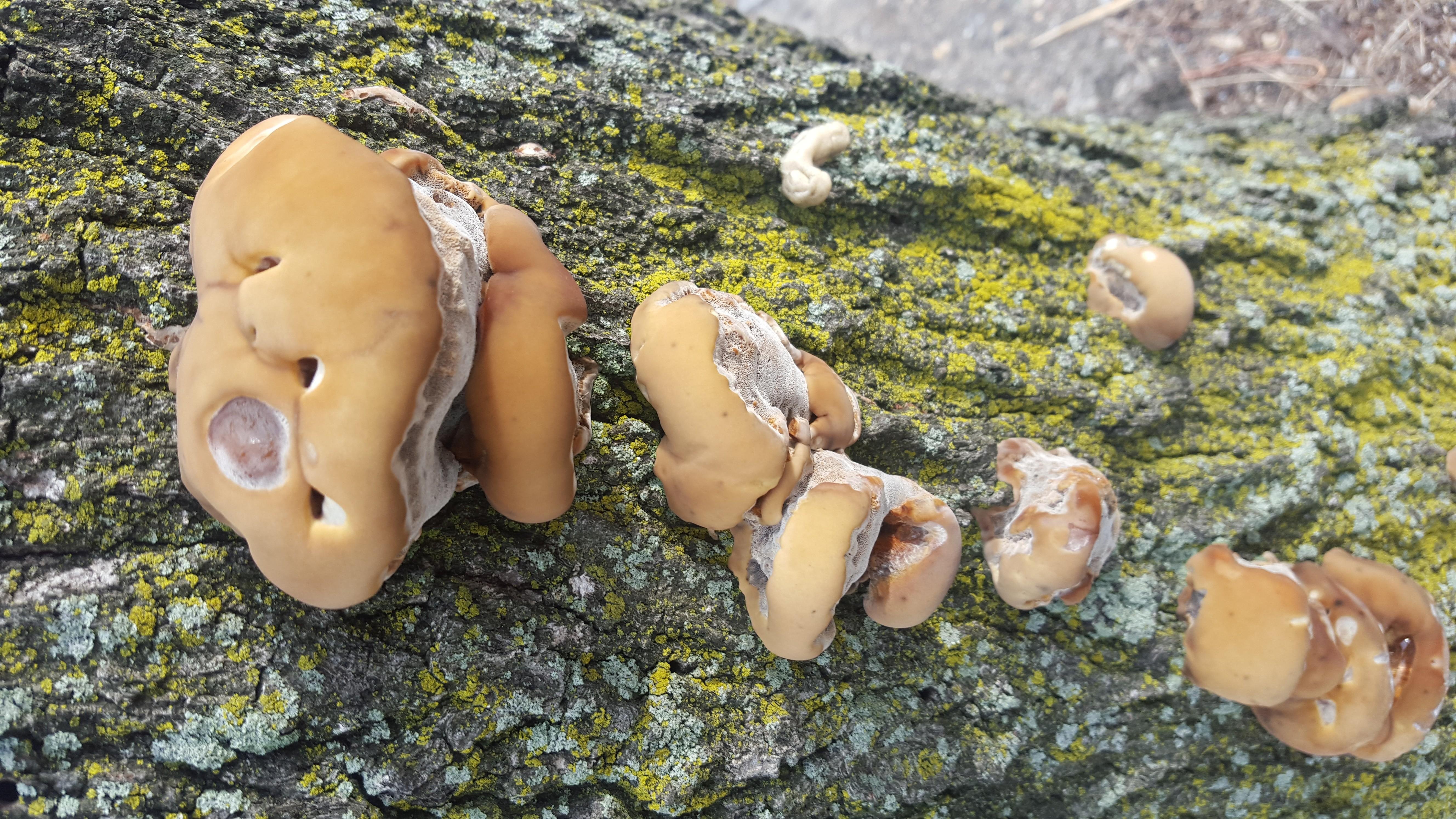
I often find mushrooms just walking around NYC
This cluster of fleshy polypores was just such a find, except a little more awkward than usual because I found them right outside my office.
This is only uncomfortable because it means my interactions with this mushroom all happened while I was in a suit, surrounded by colleagues or clients on the street. Now, I love mushrooms, and even my co-workers know about my delight in fungi. But somehow being seen gaping at a mushroom for half an hour by a client seems less than appealling.
Plus these mushrooms really needed a knife in order to take a look inside, which, of course, I could not have on me when I had occassion to examine this thing.
The result is a less thorough macroscopic breakdown than I usually prefer.
Lets get a closer look.
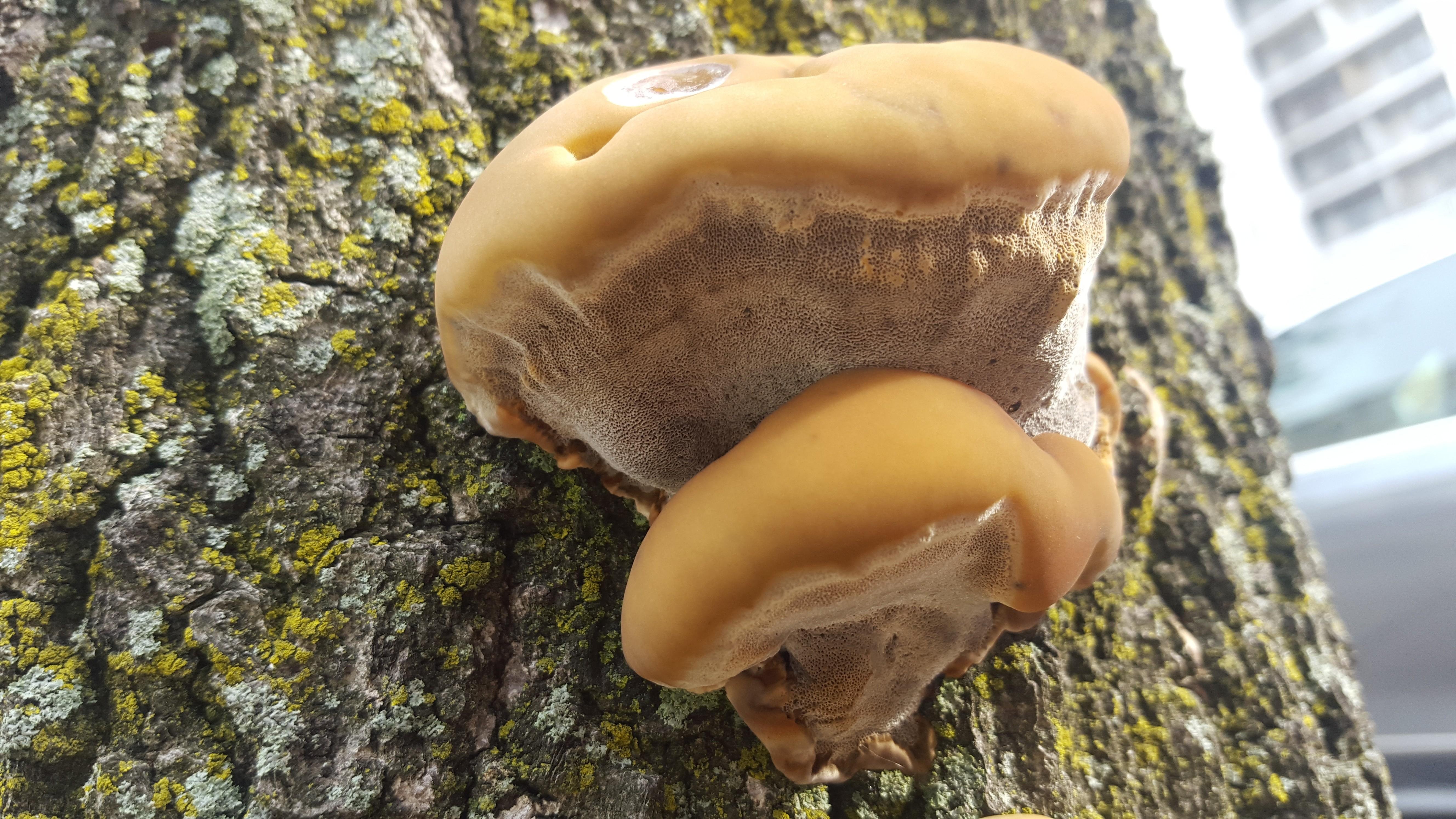
Look at that awesome pore structure!
Highly visible pores, almost mesh like ans a light tan brown color. If you can, try to zoom in a little to get a good look. Also, the beautifully smooth light orangish/brown cap on the lower mushroom.
The overall appearance is both somewhat grotesque and malformed taken as a whole, but also weirdly handsome.
Take a look at the top picture as well. See some of the bottom specimens in the cluster? The caps are not all perfectly developed, specifically the fourth and sixth from the top. The pore surface has encroached on the top area where the cap should be.
Let's get a close up, top down.
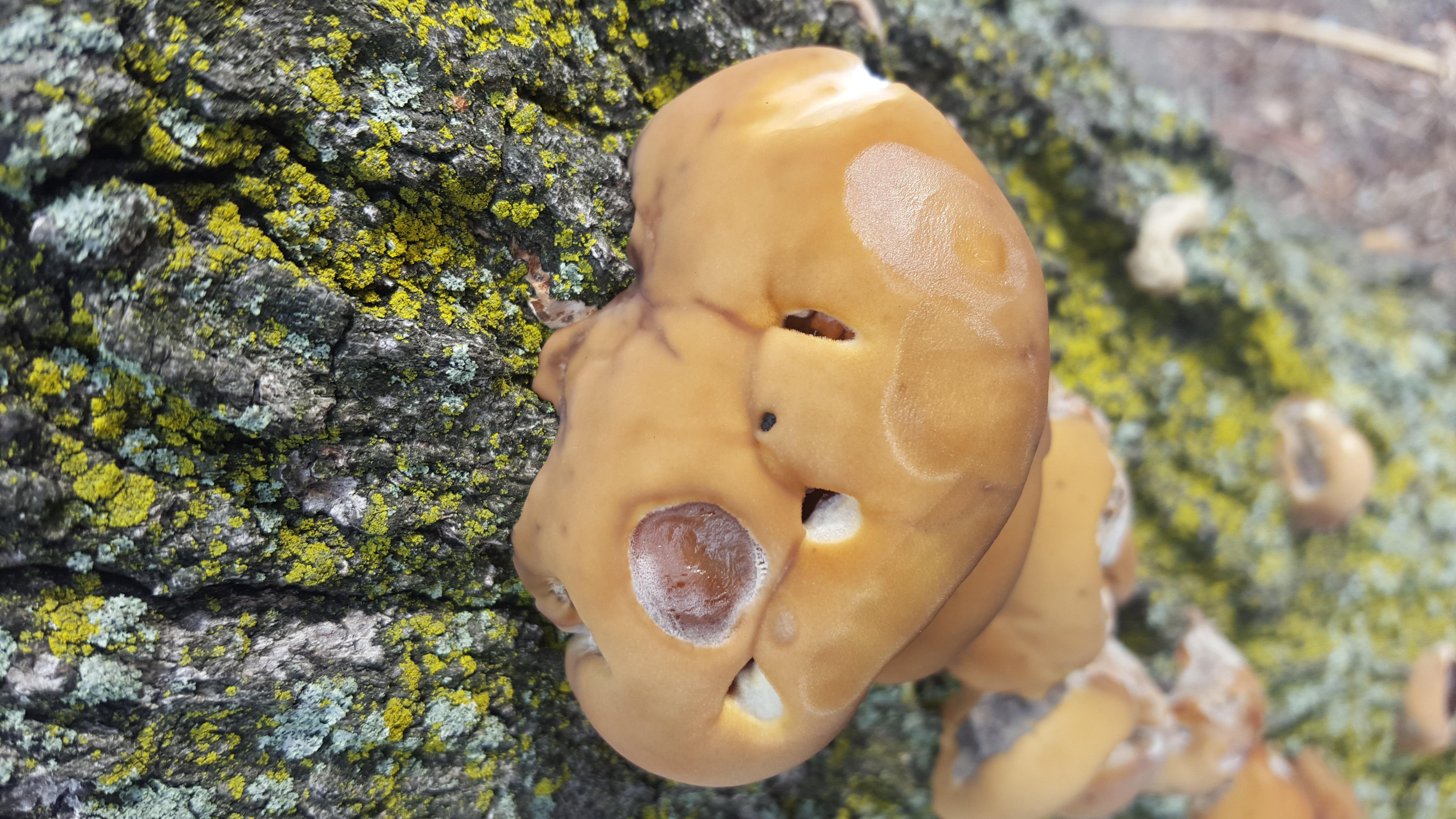
There's a lot to break down in this photo
First, the cap is that same light orange/brownish color and smooth wjere it hasn't been disturbed.
Second, there is the round, dark brown circle that appears to be a damaged portion of the cap.
Third, there are a couple of small holes, apparently, which seem to look into a potentially hollow cap. Without a knife, and on my way back and forth from my office in a suit, I wasn't able to pry further into this trait.
Fourth, you can kind of see the fine imprint of two fingerprints on the lower right portion of the cap. Those are my fingerprints after very lightly prodding the cap and finding that it was exceedingly soft and fleshy!
If even a light touch left a mark, what would happen if I pressed harder...
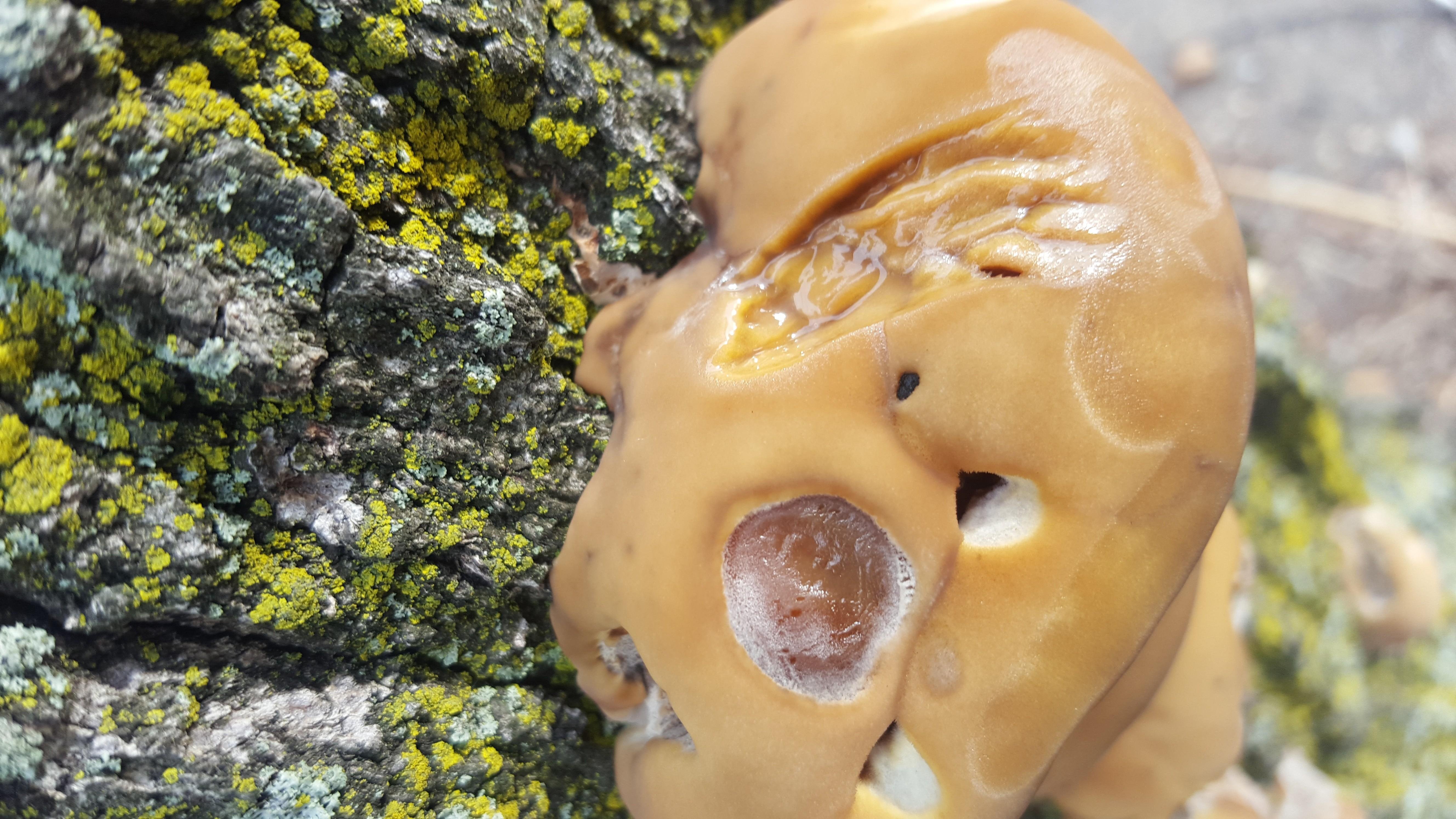
Whaaaa...?
I took the corner of my cell phone case and just pressed firmly down on the cap with it and this was the result.
The mushroom did not even begin to budge or flex from its position on the tree, however the cap flesh clearly gave in readily to the moderate pressure of the phone.
"Gave in" is sort of an understatement. The cap surface was almost like a thick custard in its fleshiness and filled with moisture. The phone case left a fairly deep indentation in the cap and caused the liquid to show itself in the new crevasse.
By the next day my indentation had also scarred over a dark reddish brown
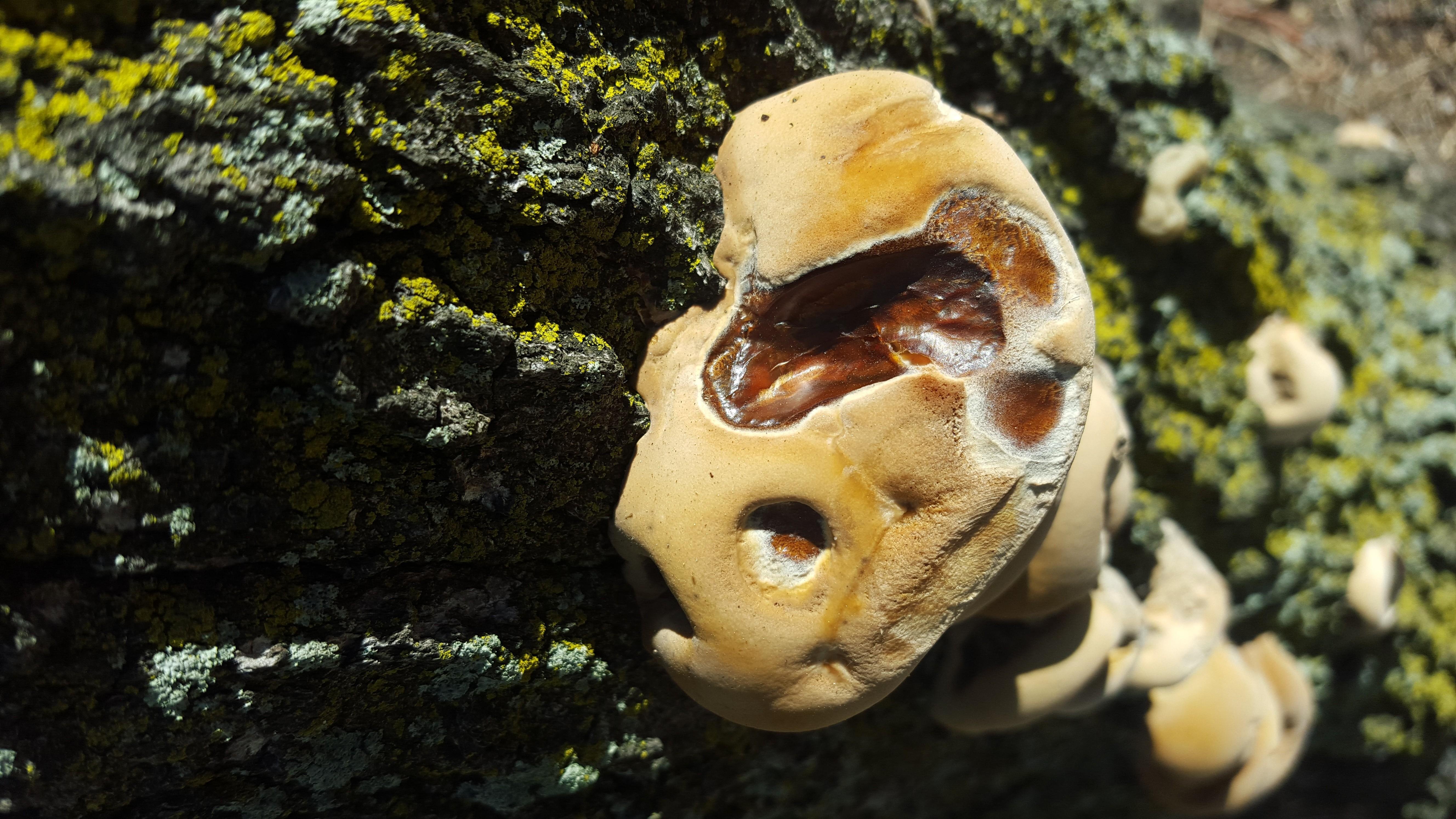
The cap as a whole has a more dessicated appearance than it did.
At this point all of the caps were hardening up substantially and becoming dryer in their appearance. However, they could still be easily drawn upon with a little pressure. Take a look.
Finally, take a look a few days later.
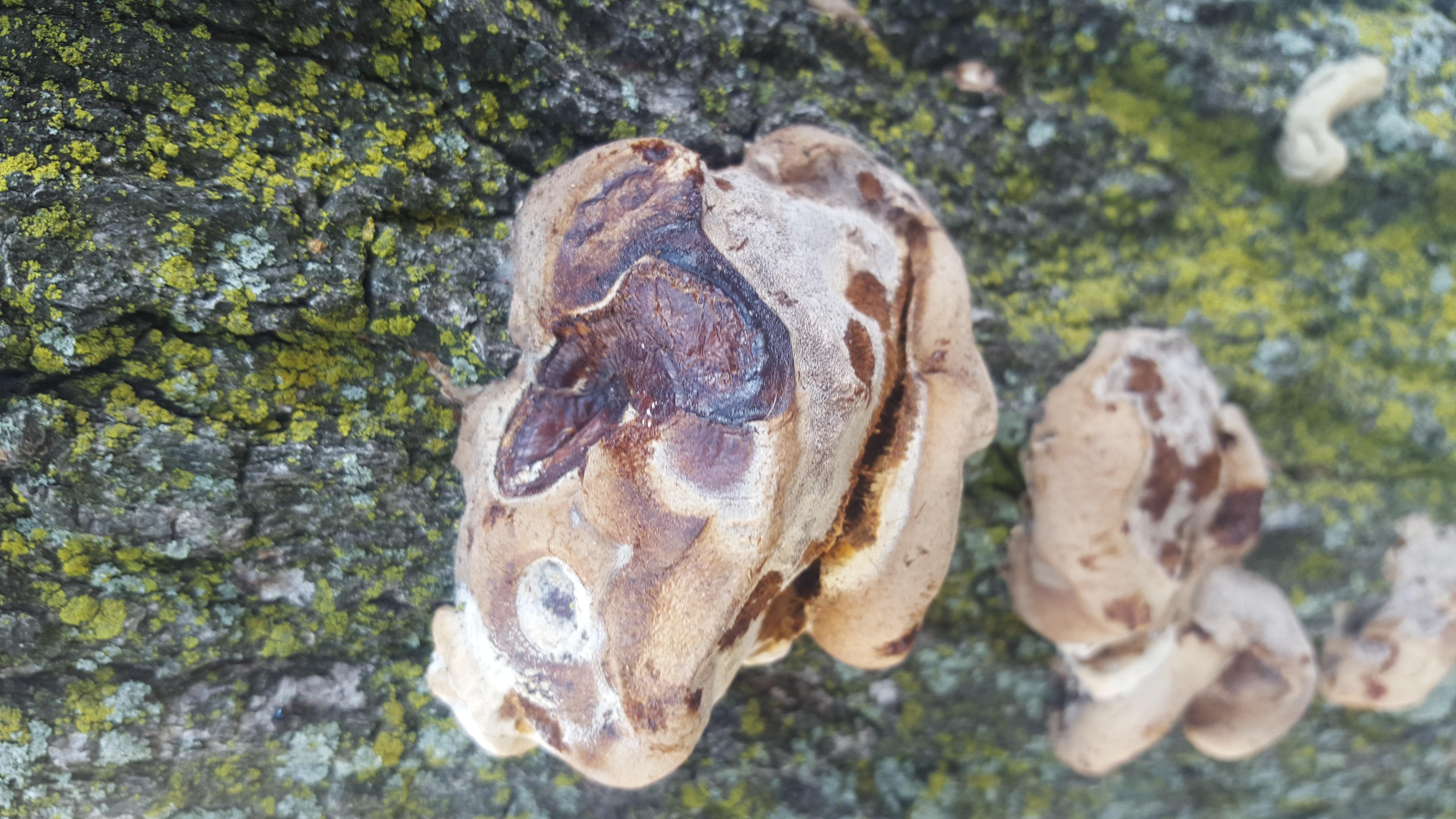
The mushrooms have dried out entirely
The whole cao has darkened, with the damaged portions darkening most of all. Meanwhile, the caos have hardened in an extreme way! When I touched these old guys they were as hard or harder than an old Ganoderma species. All the fleshyness was gone and they could no longer be imprinted upon.
OK, but what kind of mushroom is this?!
Great question. No, really. Any ideas?
All of this was happening on a very dead deciduous tree, and surrounded by other trees all of which were infected with one of the invidious Ganoderma species ravaging public trees in NYC.
But this mushroom is quite obviously NOT in the Ganoderma genus. In fact, this is my first time encountering something quite like this before.
One species that sort of fits the bill was
Ischnoderma resinosum, but it ain't perfect. However, the pores of the mushroom here were never white in my viewing, and the picture of I.resinosum I've seen don't seem to fit the bill: wider caps with a white edge.
However, Kuo's description does encapsulate certain elements of the mushroom, including its habitat, distribution, fleshiness and bruising coloration. It's also possible these were older to begin with, which would explain the darker pores. Also, he describes the cap as sometimes being inconsistent in its formation, or even non existent, which is corroborated by those specimens above where the pore surface has encroached on the top.
Additionally these are stemless and aged into a very tough woody texture, which also meets Kuos description.
However, I.resinosum is also supposed to have droplets of fluid that appear in wet conditions, but I never got to see this mushroom that way. Moreover, looking at pther sources, The photos seem totally off base. Plus the pores seem much much finer than in the mushroom I found.
More broadly, I think this might be in the Fomitopsidaceae family of mushrooms, almost certainly. But beyond that I don't know what this is really. And I don't know of a good polypore key to use either. So I am very open to suggestions on either account.
Edit 1: @fabulousfungi ran the details through a Canadian polypore key and came out to the genus Hapalopilus
Kuo writes about Hapalopilus nidulans, and although his pictures are limited, the description fits. Plus the photos Hapalopilus brings up in a cursory search look very close indeed.
THIS POST IS NOT INTENDED FOR FORAGING PURPOSES AND TO USE IT FOR THOSE PURPOSES WOULD BE DANGEROUS. DO NOT HUNT WILD MUSHROOMS WITHOUT RELYING ON A COMBINATION OF PROFESSIONAL FIELD GUIDES, IN PERSON PROFESSIONAL GUIDANCE, OR IN PERSON GUIDANCE BY SOMEONE TRUSTWORTHY WHO HAS COPIOUS LOCAL, SPECIALIZED MUSHROOM HUNTING EXPERIENCE. FAILURE TO DO SO CAN RESULT IN GRIEVOUS PERSONAL HARM OR DEATH.
Photos Are My Own
Information Sources:
[1]Kuo On Ischnoderma resinosum
[2]Wikipedia on Ischnoderma resinosum
[3]Messiah College on Ischnoderma resinosum

